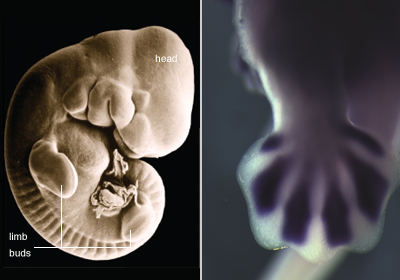Fingers and toes resolve in the limb buds as development proceeds. This involves the programmed death of intervening cells.
Film: Limb bud outgrowth simulation, James Sharpe, CGR, Barcelona,
The role of spatially controlled cell proliferation in limb bud morphogenesis, PLoS Biology, 2010 Jul 13;8(7):e1000420)
Image 1. Scanning electron micrograpgh of mouse embryo, © Wellcome Images
Image 2. Fingers emerging in the developing hand-plate, © Kate Storey |


